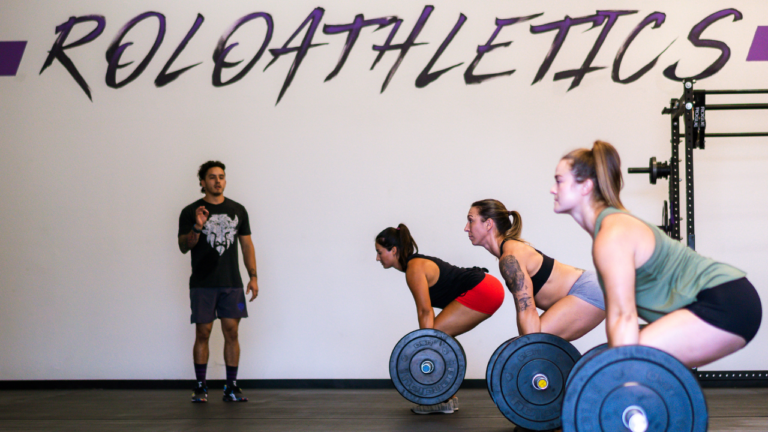Unlocking Your Front Rack: Tips for Improving Front Rack Position as a Female CrossFit Athlete

The front rack position is a fundamental component of many CrossFit movements, including front squats, cleans, thrusters, and overhead presses.
As a female CrossFit athlete, achieving and maintaining a stable and comfortable front rack position is essential for maximizing performance, improving technique, and preventing injury.
Here are some effective tips and strategies to help you improve your front rack position, enabling you to lift more efficiently, move more effectively, and excel in your CrossFit training with confidence and ease.
- Focus on Wrist Mobility:
- Adequate wrist mobility is crucial for achieving a proper front rack position.
- Incorporate wrist mobility exercises such as wrist circles, wrist flexor stretches, and wrist extensions against a wall into your warm-up routine to improve flexibility and range of motion in your wrists.
- Address Shoulder Mobility:
- Limited shoulder mobility can hinder your ability to achieve a comfortable front rack position.
- Perform shoulder mobility drills such as shoulder dislocations, shoulder external rotations with a band, and sleeper stretches to increase flexibility and mobility in your shoulders, allowing for a deeper and more stable front rack.
- Work on Thoracic Spine Mobility:
- Thoracic spine mobility plays a significant role in achieving an upright torso and proper alignment in the front rack position.
- Incorporate thoracic spine mobility exercises such as foam rolling, thoracic extensions over a foam roller, and thoracic rotations to improve mobility and extension in your upper back, facilitating a more comfortable and stable front rack position.
- Practice Front Rack Holds:
- Incorporate front rack holds into your training routine to strengthen the muscles involved in maintaining the front rack position.
- Start with lighter weights and gradually increase the load as you build strength and stability in your front rack, focusing on maintaining proper posture and alignment throughout the hold.
- Use Mobility Tools:
- Utilize mobility tools such as resistance bands, foam rollers, lacrosse balls, and mobility sticks to target specific areas of tightness and restriction in your front rack position.
- Experiment with different mobility tools and techniques to release tension, improve tissue quality, and enhance mobility in your wrists, shoulders, and thoracic spine.
- Practice Front Squats with Pause:
- Incorporate front squats with a pause at the bottom into your training to reinforce proper front rack positioning and mobility.
- Descend into the front squat with control, pause for a few seconds in the bottom position while maintaining an upright torso and active front rack, then drive back up to the starting position.
- Engage Core and Lats:
- Activate your core and lats to stabilize the front rack position and support the weight of the barbell.
- Brace your core, pull your shoulder blades down and back, and actively engage your lats to create tension and stability in your upper body, enhancing your ability to maintain a strong front rack position.
- Experiment with Grip Width:
- Adjusting your grip width can help optimize your front rack position based on your individual anatomy and mobility.
- Experiment with wider or narrower grip widths to find the position that allows for the deepest and most comfortable front rack while still maintaining proper wrist, shoulder, and elbow alignment.
- Stay Patient and Persistent:
- Improving your front rack position takes time, patience, and consistent effort.
- Stay committed to your mobility and strength training routine, and be patient with your progress, knowing that gradual improvements in mobility and stability will lead to a better front rack position over time.
- Seek Feedback and Guidance:
- Don’t hesitate to seek feedback and guidance from coaches, trainers, or experienced athletes who can provide insight and advice on improving your front rack position.
- Work with a qualified professional to assess your mobility and movement patterns, identify areas for improvement, and develop a personalized plan to address your specific needs and goals.
Improving your front rack position requires a combination of mobility, strength, and technique. By incorporating these tips and strategies into your training routine, you can enhance your wrist, shoulder, and thoracic spine mobility, strengthen the muscles involved in maintaining the front rack, and optimize your technique to achieve a more stable and comfortable front rack position.
Stay dedicated to your mobility and strength training, be patient with your progress, and celebrate each improvement along the way, knowing that a better front rack position will not only enhance your performance in CrossFit but also contribute to your overall strength, stability, and resilience as an athlete.





